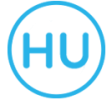Asher Goldstein, MD - LDN Radio Show 2022 (LDN; low dose naltrexone)
SUMMARY
Over the past 2.5 years that Dr. Goldstein has been prescribing low-dose naltrexone (LDN), he has shifted to a much lower and slower titration pack. He uses it for many applications in addition to pain, such as fibromyalgia, Crohn's, rheumatoid arthritis, multiple sclerosis, Hailey-Hailey, polycystic ovary syndrome (PCOS). He gets referrals for LDN prescriptions from pharmacies. He is quite impressed with how LDN works against pain, and discusses prescribing for pain. Onset of action can be short, or months, depending on various factors. He is very open to help educate healthcare professionals about LDN.
TRANSCRIPT
Linda Elsegood: Welcome to the LDN Radio Show brought to you by the LDN Research Trust. I'm your host, Linda Elsegood. I have an exciting lineup of guest speakers who are LDN experts in their field. We will be discussing low-dose naltrexone and its many uses in autoimmune diseases, cancers, etc. Thank you for joining us.
Today we joined pain specialist Dr Asher Goldstein from New Jersey. Thank you for joining us today.
Dr. Goldstein: Good afternoon, Linda, how are you?
Linda Elsegood: Good thank you. So, could you tell us what's been happening in your practice with LDN and pain?
Dr. Goldstein: I've been practicing now just about 15 years and only started using LDN about two and a half years ago. What's actually interesting is that I just attended a conference on Friday, two days ago, and when I last attended that conference in 2019, which was you know BC - before COVID – I had not even thought of LDN. I remember just flashing back to those three years previously. There was nothing about LDN said. I had nothing in my recollection about LDN. And interestingly enough, three years ago I went as an attendee, and this year I was invited to speak about LDN. So, they were very curious, and out of about a hundred doctors, pain specialists only about five had even heard about LDN. So, it was a very receptive audience with a lot of questions and answers during the non-technical sessions, just floating around. So, it was very good, and hopefully there'll be 95 other doctors that can help their patients as well in regards to LDN use and prescribing in the pharmacy.
It has developed and transformed dramatically over the past two and a half years that I've been using it. I've shifted in how I prescribe low-dose naltrexone. I've gone to a much lower and slower titration pack. I start at half milligram, and I only go up by a half milligram a week. I have a compounding pharmacy that has made a Dr Goldstein titration pack, and by and large, the issues that patients had previously with side effects are 99% gone. I think I've had one or two patients stop LDN because of side effects in the last year, and that's nearly none. Everybody reports dreams at some point in time, but when they're warned about it, it's usually not an issue, and most patients will move their once-a-day medication to the morning, as opposed to the evening; and then generally, those patients move it back to the evening a few weeks later.
I really branched out and started using LDN in in many many applications, especially with patients that have come to me, not necessarily all the time with a specific diagnosis. I'll have patients come who have been in pain for 15 years 20 years. They've had a rheumatologic test here or there that sometimes shows something, sometimes doesn't. They don't have anything specific. They're feeling run down, they're feeling exhausted, and they're in pain and nothing else has worked. LDN seems to work very much for these patients even though they don't have specific diagnoses. I'm not even counting the patients that we're treating from a pain perspective, you know, rheumatoid arthritis, multiple sclerosis, fibromyalgia, Crohn's, you know the list is big. It's big and hopefully we'll get bigger. The list that we have has people that we can treat. I'm treating people even with non-painful conditions. I have a patient with Hailey-Hailey. My dermatologist friend was very upset with me because that's supposed to be his field. I'm like, I use LDN. He's like, hey I use LDN too. How did you know that it was very good? And then, polycystic ovary syndrome. Some patients have become referred from different pharmacies, so even patients without pain are coming just for the LDN.
I read extensively about it in the beginning, and you're like okay, I think I should use this. But then as a practitioner, once you actually see the proof in the pudding, it's amazing, just amazing. For me it has completely transformed my practice, and where some of the patients with difficult to treat pain syndromes are less difficult to treat pain syndromes now. So, it's been fantastic.
Linda Elsegood: So, the million dollar question that everybody asks is, I've been on pain medications for the last 20 years. Those pain medications aren't working. I'd like to try LDN. How can I go about starting?
Dr. Goldstein: I tell the patient, but they'll usually say to me, the pain medications help me get around, but they don't really treat me well enough. They allow me to get out of bed. I tell them, a hammer can also put a screw into the to the wall, but a much better tool will be the screwdriver, right? And it makes less of a mess. So the opiates are the hammer, and it's hard, so you can either go the quick way, which is a little more difficult, or you can go the slower way, which is difficult in its own way. But look, if somebody's been on opiate medication 50, 20 years, they have to significantly reduce their load. Some doctors will want them to be completely off pain medication. I find that if we can reduce it to maybe 40 or 50 morphine milligram equivalents (MME) and people can look up what MMEs are online in regard to their particular medication, and how to convert it to MMEs. There are conversion calculators. But usually about 40 to 50 MMEs can still be handled with LDN as long as it's not extended-release medication. For example, oxycodone, a combination of acetaminophen, also sometimes known as Endocet, or Percocet in the United States. If somebody's taking seven and a half milligrams twice a day, three times a day, I can actually work that in together with LDN. I tell my patients as long as you're not taking the opiate medication four hours before or four hours after LDN, you should be okay. You can take it the other 16 hours of the day as long as you need, if you need to. For example, if they go to sleep at 10 pm and that's when they take their LDN, their last Percocet can be at 6 pm and the first one could be at 2 am if they wake up in the middle of the night. But between 8 pm and 2 am, this particular example, they can't take it. Now if somebody's on a higher dosage of that, they have to reduce it or eliminate it, and that could either be done over time with slow titration, or that could be done through medication withdrawal using suboxone. Both of them have their pluses and minuses. The suboxone is quicker, but it usually requires a patient to go through 24 to 36 hours of moderate discomfort. I call it going through the ring of fire, as until the suboxone kicks in. In order to help the patients, the other way is two to three months taper of lowering the opiates while not getting the LDN yet, which can also be uncomfortable, but it can be done. The bottom line is you don't have to eliminate it completely. It just has to be reduced.
Linda Elsegood: Okay, so what have the outcomes been, as in a time frame for LDN to actually start to work?
Dr. Goldstein: It's a huge variety of time for onset. I've seen as quick as a week. I've seen as long as six months. The main thing is talking to the patients, realistic expectations, and setting an education, meaning patients have to understand that there are many different ways that people respond to the medication. Typically, patients with fibromyalgia go quicker; patients with things like polycystic ovary syndrome (PCOS) take longer. I've seen the patients with Crohn's - those go pretty quick. In general, the medication helps patients whose diseases have two things in common: the immune system dysfunction - I don't like to say autoimmune, I like the “immune system dysfunction”; as well as an inflammatory state. In those patients that have more inflammation than immune system dysfunction, I find that the medication works quicker. And those patients that have more immune system dysfunction than inflammation, it takes longer. That's been my sort of empiric view of what I've seen.
And again, DNA is what really rules everything, so you can have the same disease in two different patients and they respond completely differently. My lowest dose to start LDN has been 0.3 milligrams, and I actually have one patient now, with polycystic ovary syndrome, at six and a half in the evening and two milligrams in the morning, so eight and a half milligrams. In the beginning I would have never even thought that a patient could respond at so low or so high, but what one thing I've learned about LDN is that don't ever put yourself in a box. You could, because LDN constantly is evolving in my mind, its use and how patients respond to it.
Linda Elsegood: You were saying there about the dosing range - have you gone higher than six and a half milligrams?
Dr. Goldstein: Not me personally. I have not had the need to. In a single dose, I haven't done higher than six and a half, but I have done the daily dose high of six and a half.
Linda Elsegood: Do you ever prescribe it more than twice a day?
Dr. Goldstein: Twice a day, okay, I'm open to it, but with those patients that I've found the need for the twice a day is usually where the second dose is having to deal with mood or energy versus pain. So those patients, once we get the second dose in the morning, that usually stabilizes them. That's typically why I'm giving a second dose. It's not necessarily for the pain, but more for the mood and energy. and as you say, everybody is individual, the dosing is individual. There are some doctors that are getting the patient stable, let's say on 4.5 milligrams, and then they will do a second dose in the morning of 4.5
Linda Elsegood: And you're doing it at a lower dose in the morning, but higher in the evening. It is so patient dependent, on what works best for that patient. How long would you say it takes to find that right dose for a patient?
Dr. Goldstein: The right dose can work in as quick as a week. It's highly unusual - but that's the quickest. And I actually didn't believe the patient, so I sort of pushed them to go higher. Then they felt worse, and then I'm like okay, listen to your own advice, listen to the patient. We went back down to half milligram. It can take as long as six plus months. There's just a huge variety of responses. But like I said, the inflammatory-state patients respond quicker; the more immune dysfunction patients take longer. But the majority of patients that I've seen, that they're having their disease 5, 10, 15 years, so these patients have a lot of patience, typically, and as long as they perceive that the doctor is working together with them, listening to them, acknowledging, a lot of patients say to me, my family thinks I'm crazy, my doctors think I'm crazy. I'm like, you're not crazy, you have an atypical medication and an atypical issue, and atypical issues are sometimes difficult to deal with. When people don't want to deal with them, then sometimes we put names and labels on them.
Linda Elsegood: So for those patients who are on a very low dose, and LDN is working fine for them, do you try further down the road to increase that dose, or do you just…
Dr. Goldstein: I mean, if it ain't broke, don't fix it kind of person, so usually not. I actually had a patient in this morning who said to me, and this is a person with a lot of both back issues as well as immune dysfunction issues, and basically it was fibromyalgia when he came in, and fibromyalgia is not a typical diagnosis in men, but this gentleman came in and I examined him. He was operating, he said, at 20% capacity when he started, and now he's at three milligrams and he's operating at 70% capacity, and he says, I'm happy where I am. He says, I don't want to push it any further up or further down. I'm worried that if I go up it'll be worse. He says 70% is a huge change from where he was. So again, if a patient wants me to push a little bit, I always tell them we can always move. I can write quarter milligram pills. If you can gently push it up or down, you have that ability. It's not a medication that's fixed in any which way. And then I speak to them that their need for the dose may increase or decrease with time, so they should just be aware that it's not fixed in stone. I even tell patients four and a half milligrams is just an aiming point. We have to aim somewhere.
Linda Elsegood: So, you can't see all the patients with pain around the world. What would you say to doctors who are presented with patients with pain, who don't really know anything about LDN, and don't feel confident prescribing it?
Dr. Goldstein: If I was able to spend a half an hour of educating a doctor, I get much more return on investment than half an hour educating the patient, right, because I can help one patient, but that doctor can help 100 patients a week. That's why I really want to go to the conferences that are not LDN conferences, and speak about LDN, and encourage doctors. I say, you know the upside is that it's relatively inexpensive, there are very few if any side effects, and very few if any drug-drug interactions. The downside for doctors is that you got to talk to your patients, but some doctors don't like to do that, strangely enough, as bizarre as that sounds. But that's really the downside - having sometimes to convince a doctor when they're like, I don't have the eight minutes to spend with the patient additionally, to speak with them about LDN. But I'm like, well first of all, you invest those eight minutes and they're going to wind up coming to you much less, complaining much less, taking up less of your time, because their pain is less, and if you can't do it, send me your Nurse Practitioner or your Physician Assistant. Let me educate them, and they can help the patients. It doesn't have to be you. As long as you're a doctor, there can be things that they don't quite understand, and you can help. You don't always have an exact formula on how to treat a patient. Sometimes, if the disease is not exact, then the medication doesn't have to be exact.
Linda Elsegood: So how can people get hold of you?
Dr. Goldstein: They can call my office, Asher Goldstein, 201-645-4336, and make an appointment, then we can take it from there. If there are physicians that are listening to this, and you want to spend some additional time with me, I'll spend half an hour or an hour. I'll go out to dinner, I'll have coffee; we'll figure something out, because for me to help a medical professional understand that this is about as benign of a medication as possible, and it can help all those patients, that when you see those patients on the list and you're like oh my god how am I going to help this person today?
I wish I found this medication years ago. Maybe I would have ripped the hair out of my head. I tell my patients this medication doesn't do anything to you, which is why there are no side effects. They're like well, why am I going to take it if it doesn't do anything to me? So, I say, this medication allows your body to start working for itself again. That's all it does. It blocks a receptor for three to four hours, that's it, nothing else. And it does that for three to four hours, then the whole magic happens - the magic of normal level of endorphins, that is. That is the secret sauce, right? Bring the endorphin levels back up to normal, and then the body has the fuel that it needs to do the myriad of chemical reactions that normal levels of endorphins allow.
Linda Elsegood: Well, thank you so much for sharing your experience with us today. I mean, it's fantastic what you've done in such a short period of time.
Dr. Goldstein: I look forward to helping more patients, and I look forward educating more medical professionals.
Linda Elsegood: Thank you, thank you. Good to see you. Hopefully next time, in real life
Dr. Goldstein: Yes, thank you, and take care. You know, I give your story when I lecture. I say look, there was this woman who was told to park herself at the corner, and she refused to take that for an answer, and because of her, I'm here today.
Linda Elsegood: Any questions or comments you may have, please email me, Linda, at contact@ldnresearchtrust.org. I look forward to hearing from you. Thank you for joining us today. We really appreciated your company. Until next time, stay safe and keep well.







